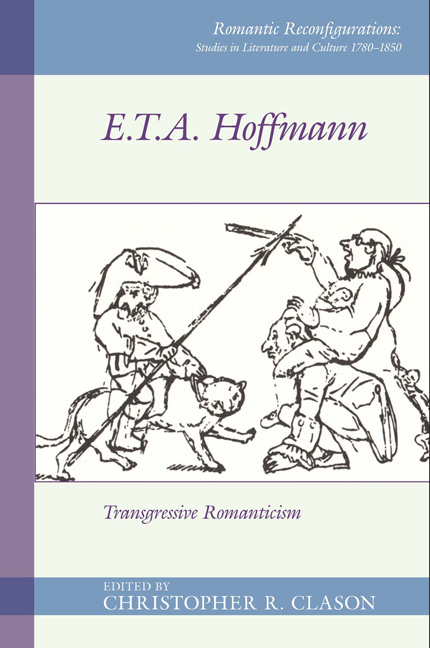Introduction
Summary
“It is impossible to subject tales of this nature to criticism … In fact, the inspirations of Hoffmann so often resemble the ideas produced by the immoderate use of opium, that we cannot help considering his case as one requiring the assistance of medicine rather than of criticism … [Hoffmann's] works as they now exist ought to be considered less as models for imitation than as affording a warning how the most fertile fancy may be exhausted by the lavish prodigality of its possessor.”
Sir Walter Scott, “Novels of Ernst Theodore Hoffmann” (1827), 330–32.Scott's infamously derogatory opinion, which was published five years after the death of Ernst Theodor Amadeus Hoffmann (1776–1822), summarizes a general tone of disapproval voiced by other well-established, contemporary literary pundits regarding one of German Romanticism's great storytellers. For example, Johann Wolfgang von Goethe's disparaging declaration that Romanticism was “the sick” while his own classicism was “the healthy” might have been directed at Hoffmann's writings perhaps more than those of other Romantics. He admired Scott's essay greatly, reviewing it and translating perhaps the most condemnatory parts of it for the German public (Hennig 369–72), thereby helping to ensure that Hoffmann's domestic reputation would remain that of an imaginative but dangerously irrational, extreme, and, finally, dismissible artist-type for decades thereafter – despite the fact that his writings were warmly embraced by a number of American, French, and Russian artists. Throughout the nineteenth century, German literary historians, if they mentioned Hoffmann at all, proved extremely unsympathetic (e.g., G.C. Gervinus or Ludwig Börne [Kremer 2010, 594–95]). One of the most significant of early Hoffmann critics writing at the turn of the twentieth century, Hans von Müller, could tolerate some of his works, but when, for example, it came to the double novel Lebens-Ansichten des Katers Murr (Life and Opinions of the Tomcat Murr, 2 vols., 1820–22), he condemned its “suicidal fooling around with form,” and then published the Kreisler half of the novel alone, after excising the feline autobiography, denouncing it as “padding that annihilates the novel's atmosphere” (Müller 1974, 736, my translation).
Information
- Type
- Chapter
- Information
- E. T. A. HoffmannTransgressive Romanticism, pp. 1 - 16Publisher: Liverpool University PressPrint publication year: 2018
